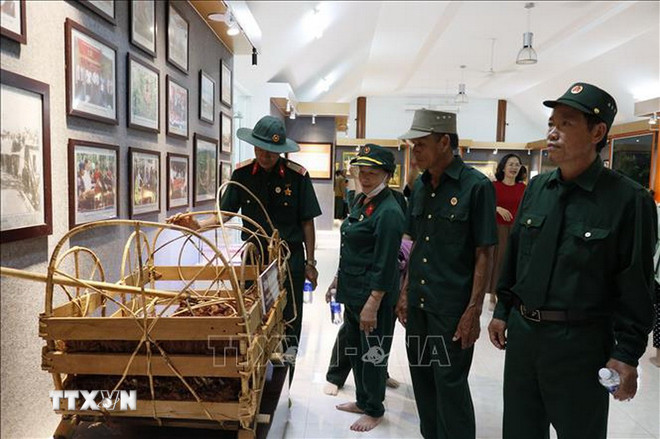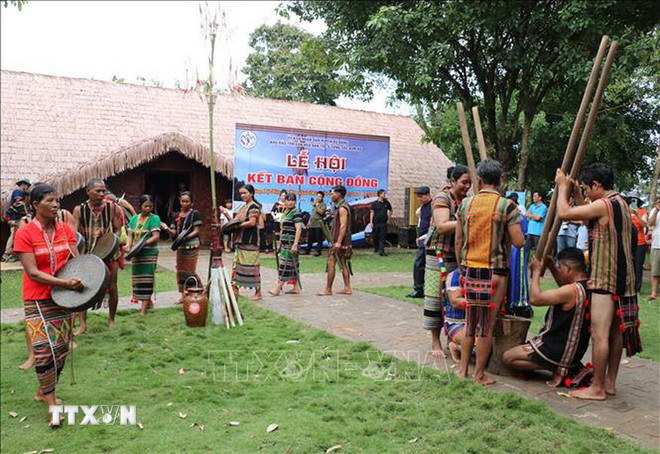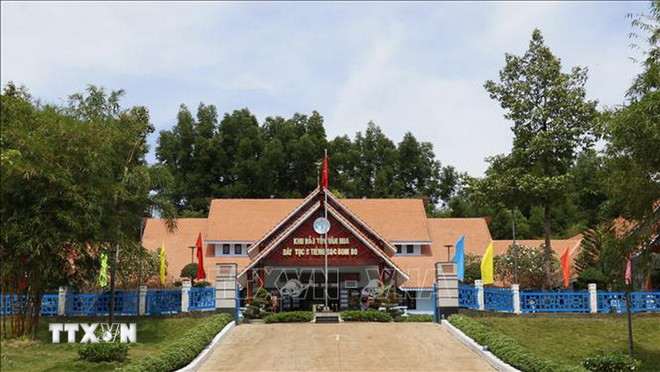With historical marks as well as unique cultural features of the Stieng ethnic group, on September 9, Minister of Culture, Sports and Tourism Nguyen Van Hung signed Decision No. 3241/QD-BVHTTDL on ranking the Soc Bom Bo historical site as a national relic.
Soc Bom Bo belongs to Binh Minh commune, Bu Dang district, Binh Phuoc province (old), now Bom Bo commune, Dong Nai province. The location is one of the top destinations in Dong Nai and is a place associated with our people in the heroic resistance war against the US to save the country.
During the resistance war against the US to save the country, the place name Soc Bom Bo became a legend, creating a heroic atmosphere and determination to drive out foreign invaders, gaining independence and freedom for the homeland and country.

With ardent patriotism, not yielding to the policy of forced population concentration in hamlets of the American-puppet regime, the people of Soc Bom Bo (belonging to Duc Phong district, Phuoc Long province at that time) crossed streams and forests to return to the revolutionary base. Despite many difficulties and hardships, the Stieng people of Soc Bom Bo remained loyal to the Party and the Revolution, actively competing in labor production to serve both their lives and the requirements and tasks of the base area.
In the early 1960s, the US-puppet regime continuously swept through, forcing people into strategic hamlets in an attempt to destroy the revolution and cut off the people's connection with the revolution. The entire Soc Bom Bo village resolutely refused to enter the strategic hamlets. By mid-1963, when the enemy surrounded and terrorized them severely, the young and old, men and women of several dozen households in Soc Bom Bo quietly crossed the forest and streams to Nua Lon base to join the revolution. In the new land, people built camps, increased production, and participated in fighting the enemy. The youth joined the army, guerrillas, and worked as liaisons.
In 1965, the Regional Command decided to launch the Phuoc Long-Dong Xoai campaign to destroy the enemy's military cluster in the North of the D war zone, within the provinces of Phuoc Long, Binh Long and on the strategic traffic axis of the Central Highlands-Saigon (National Highways 13 and 14).

At this time, Soc Bom Bo became the food supply center for the troops participating in the campaign. The people of Soc Bom Bo and the villages in the base area gathered all their forces and all available equipment to pound rice day and night, promptly serving the battlefield. After 3 days and nights of tireless pounding, the people of Soc Bom Bo provided the Phuoc Long-Dong Xoai campaign with 5 tons of rice in the shortest time, excellently completing the assigned task.
From Soc Bom Bo, the revolutionary movement spread to the villages and hamlets of Bu Dang district, creating momentum and strength for the Central Bureau and the Military Commission of the Region to decide to launch the Road 14-Phuoc Long campaign in December 1974, which was successful, creating confidence for our army and people to promote all activities on the battlefield as well as in the rear, urgently preparing for the General Offensive and Uprising in Spring 1975, liberating the South and unifying the country.
During those days of struggle, the place name Soc Bom Bo became famous and entered poetry. This was where the Stieng ethnic people pounded rice day and night to feed the army, contributing significantly to the nation's victory. The sound of the rice pounding was used as a source of inspiration for many musicians and poets.

Among the works about Soc Bom Bo, the song written by musician Xuan Hong has moved many people. The song “The sound of pestles on Soc Bom Bo” made the place name Soc Bom Bo famous throughout Vietnam during the Vietnam War because of the propaganda nature of the song.
The sound of pestles on Soc Bom Bo has the Central Highlands music melody, with content oriented towards the image of the rice pounding rhythm of the Bom Bo people to feed the army, thereby expressing the "hardship but simplicity" of the people here. After being composed, "The sound of pestles on Soc Bom Bo" was warmly received. The song also became special to the Stieng people in Binh Phuoc.
Although the song is just a short one, it makes us remember a heroic and glorious time of the nation, passed down through generations, becoming the pride of the community.
The two tools, the pestle and mortar, used to pound rice were made from rudimentary wooden equipment. Under the diligent and meticulous hands of the Stieng ethnic people in Soc Bom Bo, they made a great contribution to the victory of the nation.
Nowadays, both of these items are only used in traditional houses and are no longer as familiar to the Stieng people as before. On the festival day, the people of Soc Bom Bo hold a rice pounding competition to commemorate the glorious past and are the pride of the people here.

Soc Bom Bo is also famous for its traditional brocade weaving and many delicious rustic dishes such as smoked wild boar, rice wine, sweet bamboo rice, fried cicadas, wild vegetables, stream fish, spring leaves... and some attractive festivals such as the Community Friendship Ceremony, the New Rice Celebration, especially the Stieng wedding ceremony through the greetings of the host and guests, the matchmaker, the groom and the bride.
As an important historical relic in the resistance war against the US, Soc Bom Bo was established by the People's Committee of the former Binh Phuoc province as a Cultural Conservation Area with many attractive items such as: reception house, community house, resort, place to display the largest gong set, lithophone in Vietnam, elephant release yard, festival yard and electricity and water system, lighting...
The recognition of Soc Bom Bo Historical Site as a national relic not only has historical significance but also contributes to protecting and preserving the cultural beauty of the revolutionary land, is a red address for educating patriotic traditions for generations, and at the same time promotes and advertises local tourism in Soc Bom Bo./.
Source: https://www.vietnamplus.vn/di-tich-lich-su-soc-bom-bo-di-tich-xep-hang-quoc-gia-post1061483.vnp



![[Photo] General Secretary To Lam, Secretary of the Central Military Commission attends the 12th Party Congress of the Army](https://vphoto.vietnam.vn/thumb/1200x675/vietnam/resource/IMAGE/2025/9/30/9b63aaa37ddb472ead84e3870a8ae825)
![[Photo] Solemn opening of the 12th Military Party Congress for the 2025-2030 term](https://vphoto.vietnam.vn/thumb/1200x675/vietnam/resource/IMAGE/2025/9/30/2cd383b3130d41a1a4b5ace0d5eb989d)
![[Photo] General Secretary To Lam receives US Ambassador to Vietnam Marc Knapper](https://vphoto.vietnam.vn/thumb/1200x675/vietnam/resource/IMAGE/2025/9/29/c8fd0761aa184da7814aee57d87c49b3)
![[Photo] The 1st Congress of Phu Tho Provincial Party Committee, term 2025-2030](https://vphoto.vietnam.vn/thumb/1200x675/vietnam/resource/IMAGE/2025/9/30/1507da06216649bba8a1ce6251816820)































![[Photo] General Secretary To Lam attends the ceremony to celebrate the 80th anniversary of the post and telecommunications sector and the 66th anniversary of the science and technology sector.](https://vphoto.vietnam.vn/thumb/1200x675/vietnam/resource/IMAGE/2025/9/29/8e86b39b8fe44121a2b14a031f4cef46)































































Comment (0)